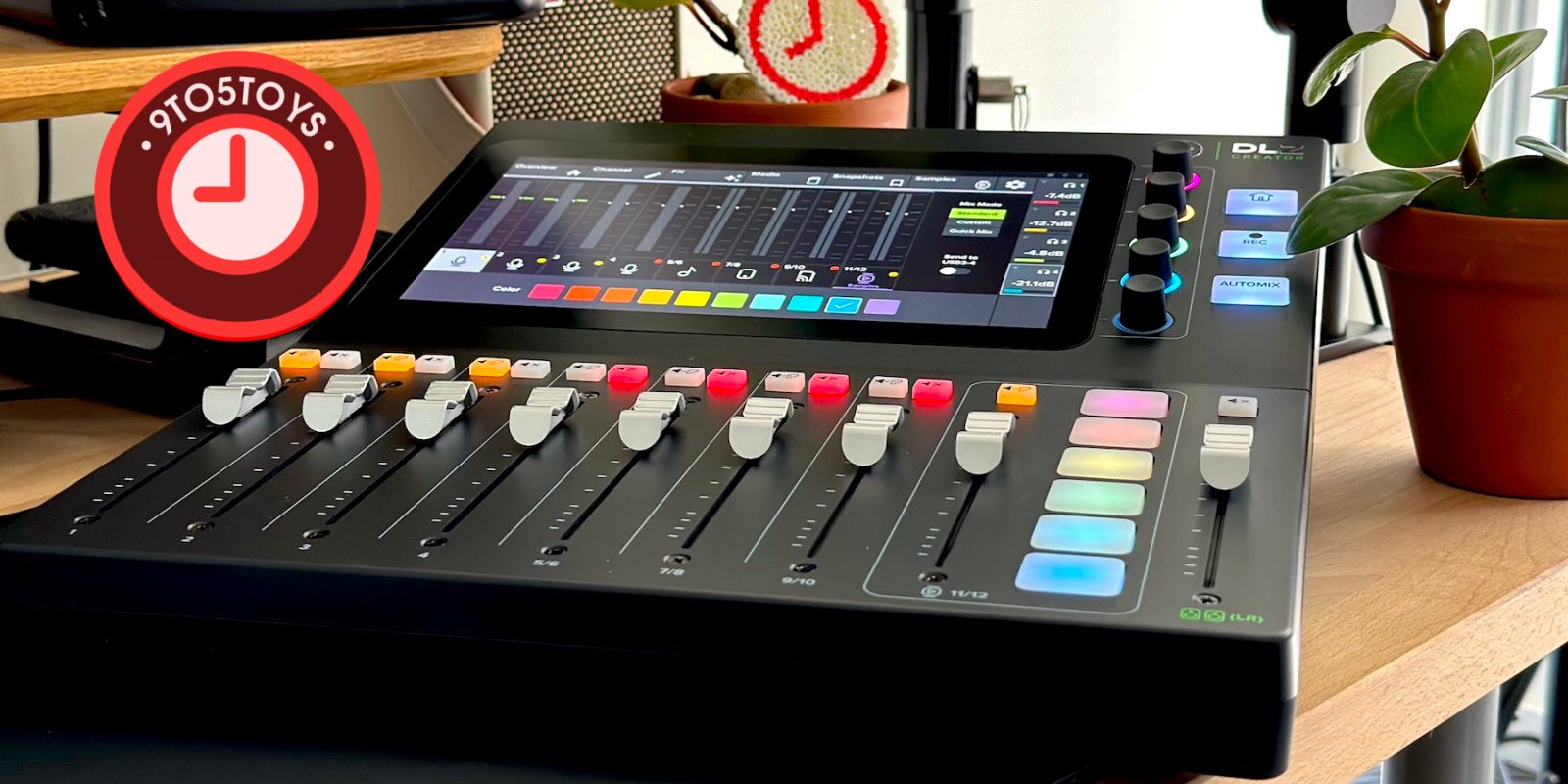
Today Mackie is introducing its new all-in-one content creator and podcasting workstation known as the Mackie DLZ Creator Adaptive Digital Mixer. Delivering a complete podcasting and broadcasting recording rig, it features a large touchscreen display, a series of microphone inputs, a built-in sample/stinger trigger section, all of the headphone outputs you’ll need, and more – you can even record your work directly onto the machine with microSD support if you want. It essentially combines just about all of the most important elements of a good broadcast into a single unit and we have had a chance to give it a test run over the last couple weeks ahead of today’s official reveal. Head below for a closer look.
Hands-on with the new Mackie DLZ Creator Adaptive Digital Mixer
Officially known as the Mackie DLZ Creator Adaptive Digital Mixer, it features four Onyx80 XLR microphone preamps, inputs for three external audio sources (including Bluetooth to have guests call into the show), a 10.1-inch touchscreen, and allows you to record directly to the machine or use it as an audio interface to record into your DAW/MacBook/laptop of choice. There’s also a sample tank of sorts, that allows you to store and trigger banks of pre-recorded audio clips and stingers.
The unit leverages smart Mix Agent technology that will automate the setup process (more on this below) as well as Mix Minus that will mitigate echo feedback when making use of the Bluetooth feature for folks calling in as guests.
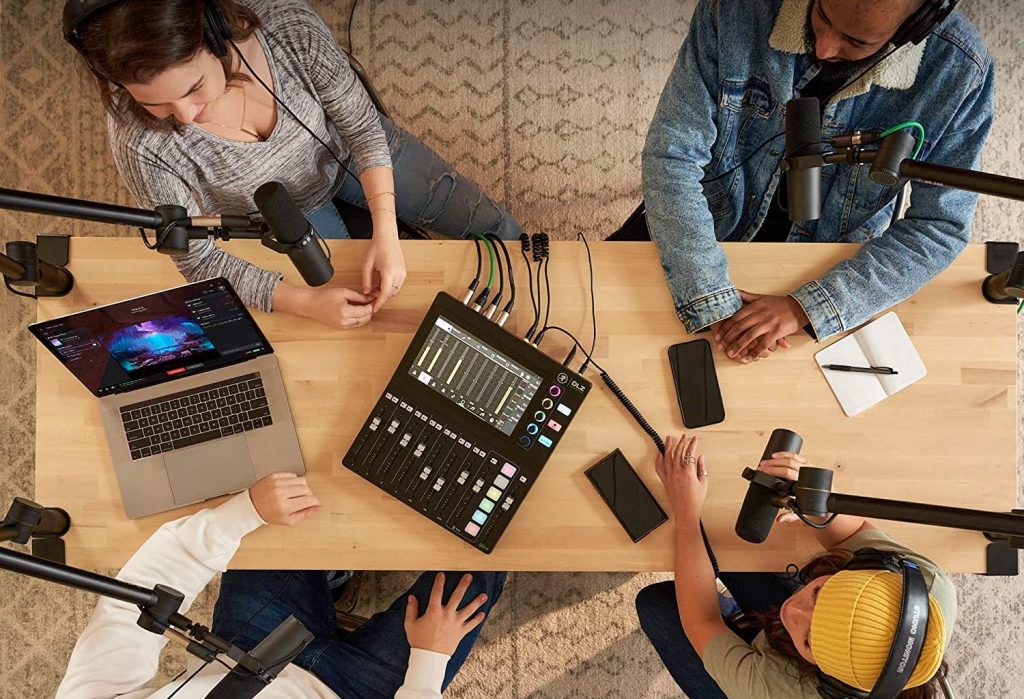
Here’s a look at the setup and functionality mode options:
- Easy Mode: A basic user interface configuration delivering the fastest path to recording your first broadcast. For those who want to get great results without menu-diving.
- Enhanced Mode: Expanded control over your sound and mix. For those who want some customization without an overwhelming number of options.
- Pro Mode: Complete control and fully customizable. For those who know what they want, and how to get it.
Key features at a glance:
- The Mix Agent setup assistant provides easy setup and automates functions, dialing everything in exactly where it needs to be with minimal effort or learning curve.
- Pro Mode unlocks the full power of the DLZ Creator to take control and fully customize the product to get the desired sound.
- The AutoMix manages levels for up to four mics, so users and their guests can be heard — even when everyone speaks at the same time.
- The DLZ Creator produces studio-quality audio, and the Onyx80 mic preamps ensure any mic one uses will sound loud and pristine. Users can also create customized headphone mixes for guests.
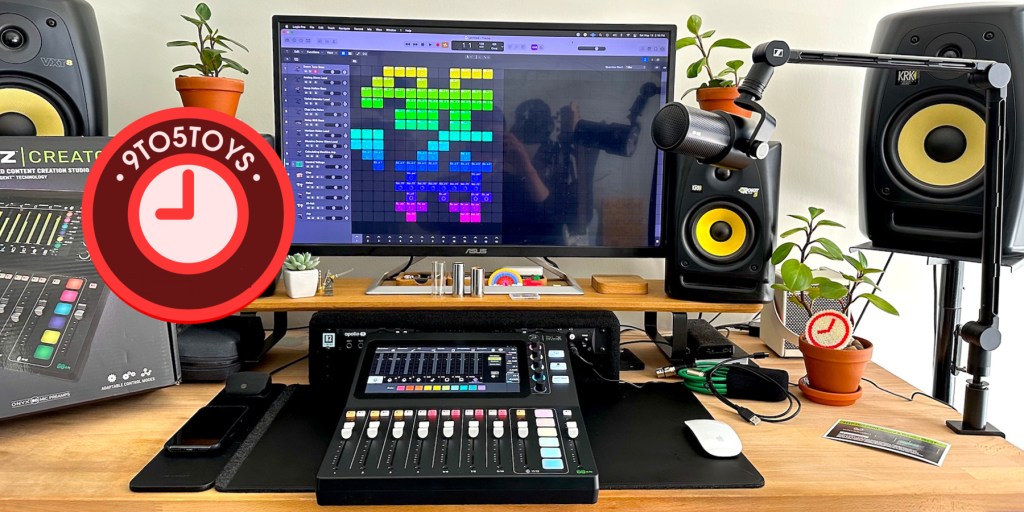
Build quality
You’re essentially looking at the same hardened plastic treatment for the chassis and case as we have all become accustom to with gear in the product category – there’s nothing particularly robust to write home about in this regard but it is on par with just about all of the gear in this price range and category outside of say something like the Teenage Engineering approach, but again, that’s another thing entirely.
The backlit buttons (solos, mutes, sample triggers, and more) are all well made and of the expected quality here, much like the faders themselves – there’s a sort of desirable resistance and very limited, undesirable wiggle too – but it might have been nice to have a subtle notch at unity gain (or when you move the faders to zero). This is more of a personal thing for me though, and some folks prefer faders of this nature without them.
As for the rotary encoders found along the right side of the display (multifunction but typically used as volume controls for each of the currently loaded sample triggers), no complaints at all. There’s a sort of notched feel to them I personally love, and they are about as rock-solid as one could expect in this price range (or at all for the most part). The multi-color light ring surrounding each of them is also a nice touch, providing an immediate heads up to the user as to which sample bank they are adjusting at any given time.
I should also quickly mention, mostly because it’s a personal gripe of mine with some gear, there’s enough weight here to keep the entire unit in place. This isn’t the kind of thing that’s going to slide on your tabletop if it gets nudged or when you’re sliding faders around, triggering samples, and tapping the display in the heat of a broadcast.
Full touch display
I’ll keep this bit short – the display is very nice. I’m not sure if its an OLED, but it is nearly as sharp and glare-free. Even in an extremely bright room in the middle of the afternoon, with sunlight blasting through floor to ceiling windows, the display remains entirely legible, sharp, and with high-contrast even at an angle. The overall UI design here deserves some credit as well, with intelligently designed color palettes, text more than large enough to read even at a distance, and sizable enough touchscreen buttons, it is an entirely responsive display with almost no lag. All-in-all, the screen is a highlight here that is easy to understand, program, and use on the fly as well as something that helps to warrant the nearly $800 price tag.
Guided setup process
The guided setup process is great for beginners and pros new to the device alike. While most experienced engineers and streamers likely won’t need any of this, it is a nice touch either way.
Each step of the process is simple and straight forward, from test audio to help set and connect headphone outputs to connecting your microphone(s) – there’s even a quick option for the type of microphone you’re connecting to each of the four inputs including dynamic and condenser preset options right to selecting the actual model from popular options out there like the Shure SM7B. For example, choosing the condenser option or a model in that category will automatically engage the phantom power it will require to run as well as a guided setup screen for setting the ideal input gain – you can even choose “Listen and Set for Me” to have the machine take care of the job for you.
A very similar process then applies for input channels 5 to 10 – this is typically where users will connect external audio sources via the stereo line inputs (1.4-inch pair and a single stereo 1.8-inch aux jack), Bluetooth, USB audio, and a channel for audio coming off of the built-in microSD card slot.
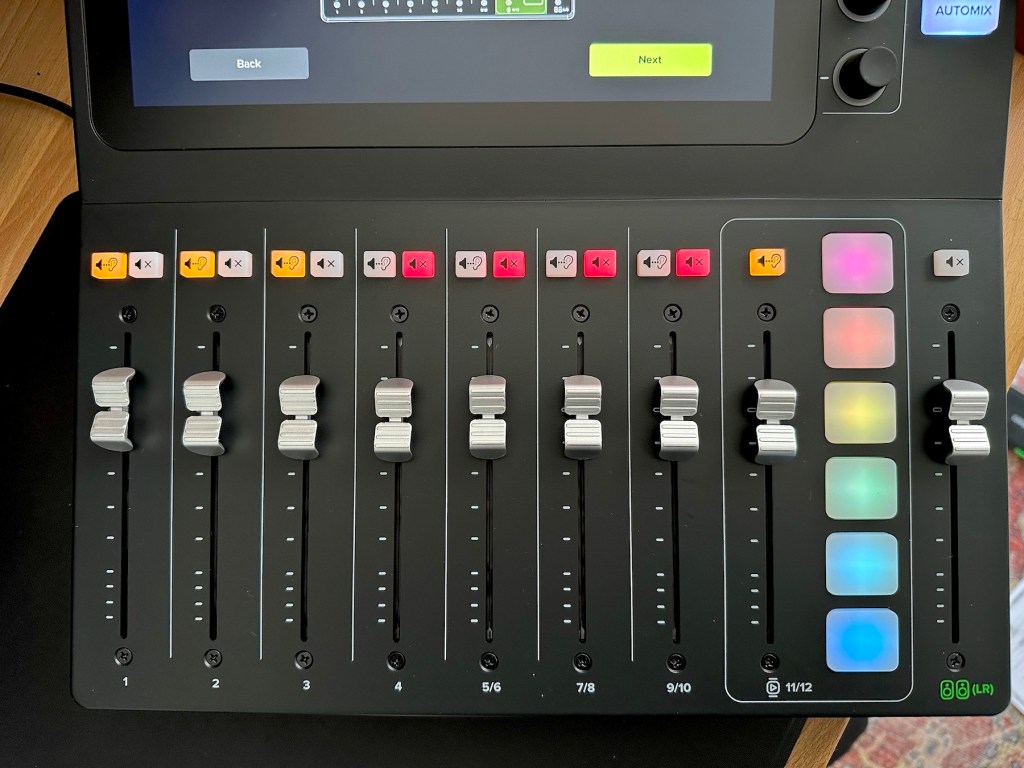
Sample tank
Those colorful buttons you see on the bottom right side of the Mackie DLZ Creator Adaptive Digital Mixer are essentially assignable triggers to launch sample sounds, like stingers, SFX for a broadcast, theme jingles, and things of that nature, directly from the internal microSD card storage. To the immediate left of the buttons you’ll find a dedicated fader to control the volume of the sample trigger playback as well as a solo switch to isolate the sounds playing back off channel 11 and 12 or with the rest of the channels that are currently set to solo mode.
The machine can store up to 24 sounds/samples split between four banks, all of which are immediately accessible via the Sample Status Bar found on the main mix page and you can edit/alter all of the banks and slots via the dedicated Samples tab on the Home screen – you can also customize the colors on each of the sample trigger buttons as you see fit. Obviously you can store far more samples than this on a microSD card, this max limit here just refers to the amount of samples that are loaded up, so to speak, and at the ready in your current setup.
It should also be noted here that within the “Media” tab on the main Home (or mixer) display, users can access/see all of the audio recorded on connected microSD cards and USB devices, as well as files recorded by the mixer itself.
Take a snapshot of your settings
This aspect of the machine is about as convenient, helpful, and necessary as it is obvious; you can take a snapshot of all the current mixer parameters and settings so you can recall them later or save multiple setups for various types of streams, recording sessions, or podcast lineups (multiple guests, compared to just one, or more creative options for video/audio essays, etc). You can load, save, rename, and delete these snapshots at will via the “Snapshots” tab on the main Home screen.
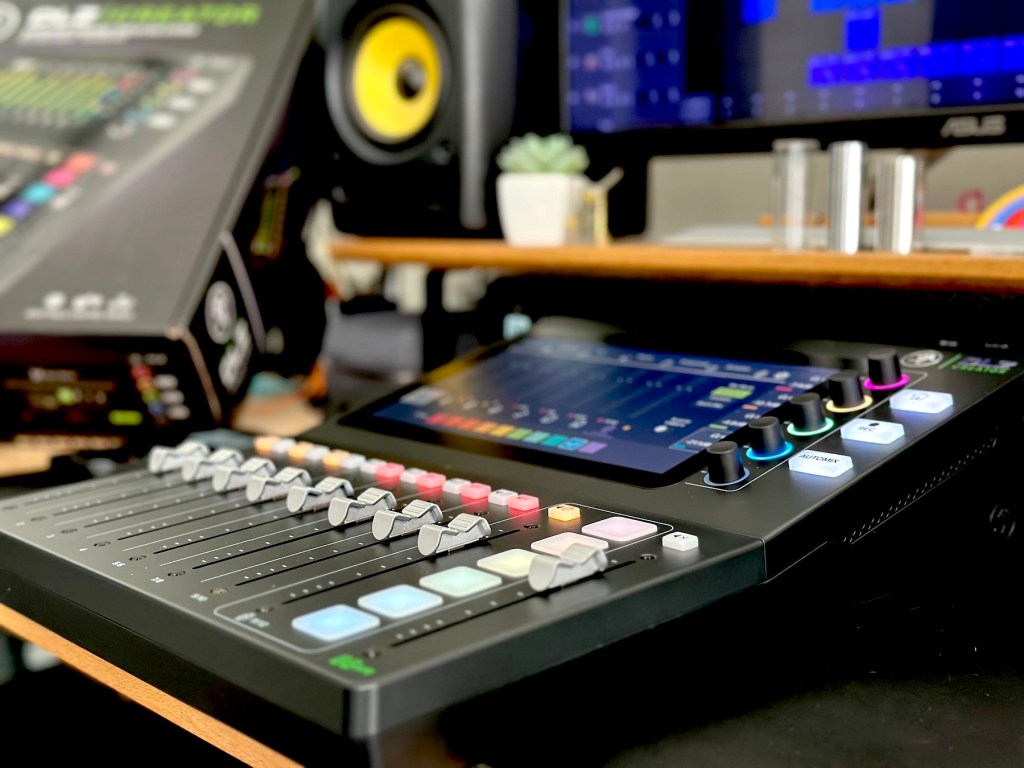
Final thoughts – Mackie DLZ Creator Adaptive Digital Mixer
Mackie is taking on the all-in-one market here with its new DLZ content creator studio/mixer hybrid unit. It provides a hub for your entire setup while also allowing you to store and trigger audio clips, as well as record the entire thing directly to its internal storage media.
While I, for one, always prefer to use a DAW of some kind, of which the DLZ is fully compatible, it is more than capable of running even intricate 4-person shows from a single unit. That is certainly one of the main selling points with the Mackie DLZ Creator Adaptive Digital Mixer outside of the notable touchscreen display, auto-setup, and simple-to-use UI. It is also something for potential buyers to keep in mind. There are far more affordable paths to landing a solid solo podcasting or streaming rig out there – all you really need is a half decent USB mic and a smartphone/the MacBook you already have – but for those looking to take it up a notch or future proof their budding media empire, you will likely spend a whole lot more than $799 to land a 12 channel mixer, recording device, sample trigger system, something that can easily integrate wireless Bluetooth audio sources into a stream, and quickly bring four separate microphone inputs into a single stereo mix for the audience.
Buy the Mackie DLZ Creator Adaptive Digital Mixer
FTC: We use income earning auto affiliate links. More.










Comments